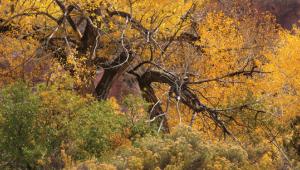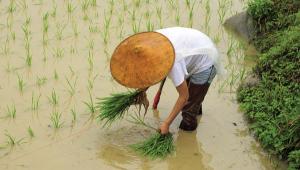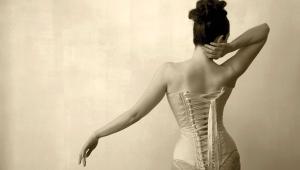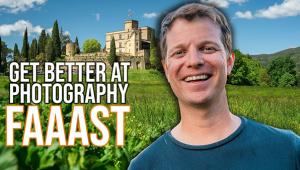Photography really means so important to my existence. Without it, I don't think that I could survive those depressing moments I've had in the past. - YOR Health
Pro Talk
Jill Enfield; Ways And Means
"With the alternative processes, you can see someone's hand at work. It's a very personal way of creating a photograph."
Most of us are finding more of everything thanks to digital imaging technology,
but for some photographers, the essentials are getting scarce. Jill Enfield,
for example, for whom it's not a question of cameras--she uses digital
and film--but of processes, as in alternative processes like cyanotype,
kallitype, platinum, and palladium, for example. Or something as relatively
simple as handcoloring an infrared image.
"It's becoming a problem getting some of the things I use for the
processes," Jill says. "Over the past couple of years different
things have disappeared." Like her favorite paper for painting on, Ektalure
G. "If Kodak is going to stop manufacturing paper," Jill says, "I'd
be surprised if they keep doing chemicals for those papers."
|
|
|
Which doesn't mean Jill, or anyone else who loves the art and craft
of the alternative processes, will give them up. In fact, the hands-on, do-it-yourself
nature of these processes ensures that they'll survive. "I can always
get the chemicals," Jill says, "though they may be harder to find
or more expensive. If I have to, I can make the processing chemicals from scratch."
Which is how she did it back when she started. In the 1970s, she says, many
people were making their own developers even though they could buy ready-mades.
People liked the fresher-made chemistry, and they liked the idea that they could
decide how much of each chemical to add to the mix. "A lot of that's
been lost as people went and bought the ready-made manufactured stuff,"
Jill says, "but I still know how to make it." Many photographers
involved in alternative processes pride themselves on being as self-sufficient
as possible, so what's happening now is a search for substitutes and a
bit experimental improvisation.
Jill's dedication to the old processes is balanced by an appreciation
of today's technology. "I use the computer a lot, and I like shooting
digital," she says, "but most of all I like having choices and doing
different things, so it's sad to me that things have disappeared."
Jill not only gets personal satisfaction from doing the work, she also teaches
courses in alternative processes and has written a book about them, Photo-Imaging:
A Complete Guide to Alternative Processes.
|
"With a computer you can fake cyanotypes," Jill says, "but
they're fake. Does it make them any less appealing? No, not at all. Some
people will like them very much, but I like to work in the darkroom. I like
playing around with chemicals."
It's all about choices, she maintains. "What do you like to do?
Do you like to click a mouse or do you like to put chalk down on paper? It's
a different tactile feeling, and I like to work with my hands."
The overall attraction of the alternative processes is, Jill says, "the
romance of the image, the ability to interpret an image beyond what's
first seen and captured. Handcoloring makes an image look timeless. In the cyanotype
and the palladium print you see an incredible range of shades and tones."
And all these processes are a way of going beyond the mechanical nature of photography,
she adds. "You can see someone's hand at work. It's a very
personal way of creating a photograph."
Jill Enfield is a NikonNet "Legends Behind the Lens" featured photographer.
The current "Legends" story and an archive of profiled photographers,
including Jill, can be found at www.nikonnet.com.
Jill's website is www.jillenfield.com.
- Log in or register to post comments




















































